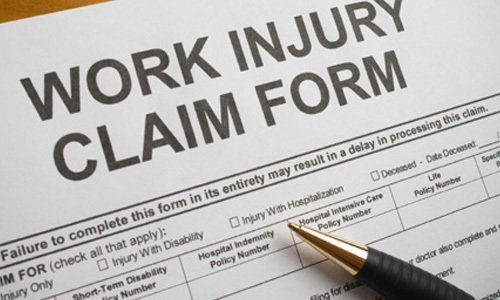Why You Should Invest in Post-Employment Testing
Have your worker’s compensation injury cases been costing you too much money? Read on to see how post-employment testing can help.

Have you checked your latest figures for the cost of worker's compensation for injuries? Are you afraid of looking at it because it is needlessly high? Welcome to the club! The pandemic and The Great Resignation have wreaked havoc on the labor market, leaving several businesses desperate for new hires. The result is a lack of post-employment testing.
Managers prioritize filling positions to help the organization manage daily workloads instead of checking how much those resources can cost in the long term. We can somewhat understand where this decision is coming from; however, we assure you that it costs the company too much money.
This blog will help present a few ground realities, explain post-employment testing, and mention its benefits.
Some Statistics about Worker’s Compensation for Injuries
Source: Injury Facts , Get Foresight
You may think that injury compensations are a minor isolated problem your organization faces, but that is far from the truth. Consider the following statistics to understand the extent of the problem to accept that you need a targeted solution.
- The total cost of work injuries in 2020 was over 163 billion dollars.
- Employers lost 99,000,000 productive workdays because their employees were injured and needed time to recuperate.
- The insurance cost of compensation for private industry workers was $0.45 and $0.58 for state and government workers.
- Insurance assigned risk is highest for contractors; therefore, they have to pay the highest premium for employee healthcare coverage.
These statistics prove that injury compensation is a common problem for businesses, and they need to rely on special preventive measures to solve the problem.
What Does Post-Employment Testing Entail?
Post-employment testing is a unique measure that takes a different approach to injury prevention. It recognizes that businesses hire workers without testing their health to gauge if they are physically fit to carry out their responsibilities.
PCP has a systematic procedure to conduct the relevant tests and analysis and present evaluation reports.
- Step 1 – Contingent offer of employment
- Step 2 – A trained personnel performs the 'Physical Capacity Profile Test' at the company's preferred location.
- Step 3 – Observations and data are sent for evaluation at the laboratory.
- Step 4 – Generate a test report to determine if the employee is fit to perform their duty.
These test results will help you filter out people who do not have the fitness level required to perform their duties. This facilitation is especially significant for jobs requiring physical labor and putting unfit people at higher risk of injuries.
Your business can use the results to decide who to hire to reduce your liability.
Benefits of Investing in Post-Employment Testing
The concept may seem impractical at the moment due to the problems with hiring and recruitment; however, it has several advantages. Following are the benefits of post-employment testing for your business:
- Less On-The-Job Injuries
The post-employment test by PCP thoroughly evaluates the physical condition of your shortlisted candidates and evaluates their abilities against the job requirement. The testing includes checking body fat percentage, grip strength, endurance and lifting, range of motion, etc.
All criteria are relevant because they help gauge the real risk of injury per employee. The more their fitness level aligns with the job requirement, the lower the risk of injuries.Reduction in Injury Compensation
Insurance covers a significant portion of injury compensation, but there are times when the business has to pay part of the cost. Hiring people who pass safety testing is the best option because it will help you reduce the overall compensation cost.
The change will boost your net profits by helping you lower your expenses.Lower Insurance Premiums
Insurance premiums are set based on the level of risk of injury happening. The risk is naturally higher for companies in industries like manufacturing, construction, deliveries, etc. However, this risk evaluation is also affected by the number of injuries that typically happen during your routine operations.
If you succeed in lowering the number of injuries, you can bargain for lower premiums, reducing your overall insurance cost. Hence, asking the final candidates to undergo safety testing has several cost optimization benefits.Fewer Disruptions in Work Schedules
The abovementioned statistics showed how many productive days are lost to work injuries and subsequent recovery. The problem extends further because it also complicates scheduling, often increasing work pressure on the remaining employees.
Fortunately, you will not face such problems when you hire employees who are fit to perform their job roles. They are less likely to fall sick and become injured, so your work can go smoothly.
Wrapping Up
In short, investing in post-employment testing is the correct decision because it will result in cost optimization and smoother workflow. The best solution is to connect with an expert like the PCP and sign up for the services to enhance your hiring.










